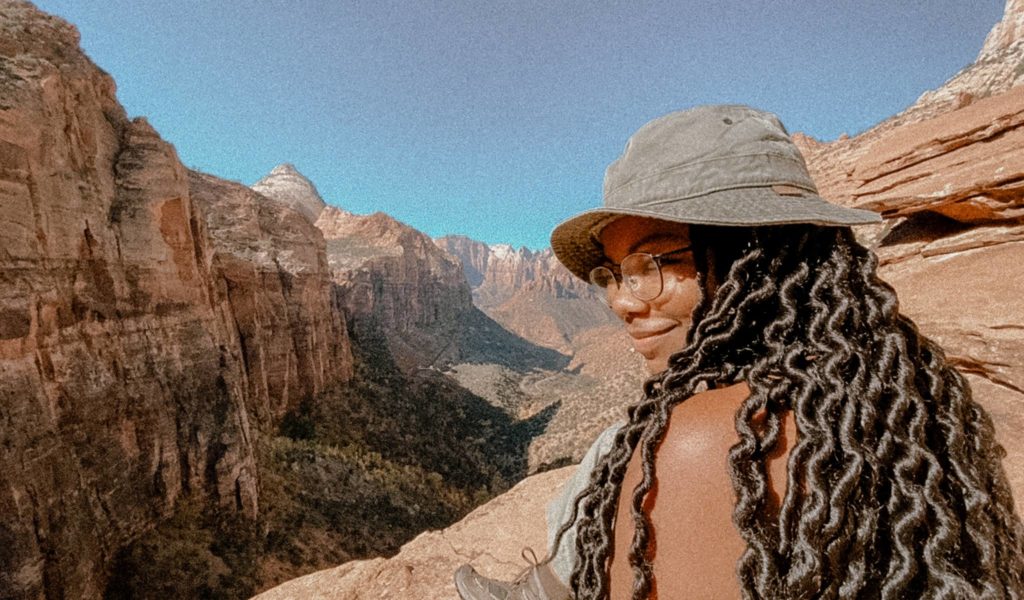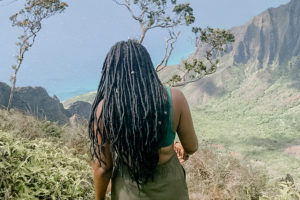
1. Tell us about who you are!
I’m Ayana! Im currently a college student, studying Graphic Design at San Jose State University. Im 28 years old, married to my wonderful husband, Michael, and we live together with our collie, Luna. In my free time, I love getting out in nature or doing any and everything creative. In the recent couple of years, I began sharing tips on living minimally and low-waste with my friends and family on Instagram.
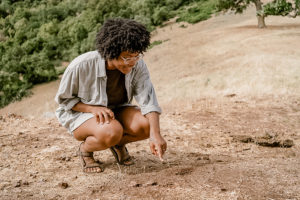 2. What inspired you to move towards a low waste lifestyle/intentional living?
2. What inspired you to move towards a low waste lifestyle/intentional living?
Once the climate crisis started showing up in the news, I did some digging myself, watching documentaries and reading studies on the damage we are doing to the planet and the people who are being impacted. From there it kinda became a mission of mine to try to reduce the amount of waste that comes from my household and to really pay attention to the companies I give my money to. I understood from pretty early on that most of the damage is being caused by mega-corporations, fast fashion companies, Big Oil, etc…but I had to make some changes in my life to feel like I wasn’t mindlessly contributing to the problem.
3. Can you tell us a bit about what living sustainability looks like for you and what Zero Waste means to you?
To me, living sustainably is simply trying your best at reducing your negative impact on the planet. It’s not about being perfect. I don’t believe its possible for most people to be completely zero-waste, but there are so many reusable products and tips for reducing your waste out there! Simple things like carrying a reusable water bottle with you makes more of a positive impact than most people realize.
4. What is your advice for people who are looking to reduce their plastic consumption?
Take it one habit, one step at a time. I would maybe start with the kitchen and consider these questions: What foods in my pantry can be bought in bulk instead of in individual packaging? Are there any foods I am willing to stop buying because of the amount of plastic they’re packaged in? What products am I using to clean my dishes? Are there more sustainable options out there? After answering these questions, you’ve acknowledged ways in which you can reduce your plastic consumption. And after you’re satisfied with your kitchen, move on to the next room. But remember not to put too much pressure on yourself. Not everyone has access to bulk foods stores and zero waste shops. All we can do is our best with what is available to us.
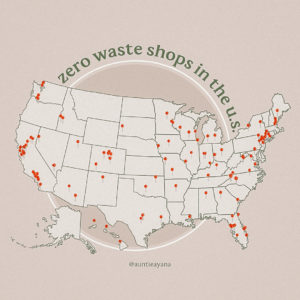
Source: instagram.com
5. There is a space for everyone in solving the climate crisis, whether you’re a researcher or an artist, we can all use our skills to educate our peers and push for a better world. Can you tell us a little about how you’ve utilized your design skills to do that on your platform?
I’ve really enjoyed creating infographics that share facts and tips on sustainability. Some of the topics I’ve shared infographics on are: how communities of color are impacted by climate change and industrial pollution, zero waste shop locations, a guide to sustainability certifications and organizations, natural fibers vs synthetic fibers, tips for shopping secondhand, and the lessons of environmentalism in Studio Ghibli movies. It’s been amazing to see not only my design skills develop but also the growth of my platform. It is so encouraging to know that someone learned something from me or that Ive motivated someone to make changes in their lifestyle.
6. What are a few of your favorite low waste products?
All my friends and family are probably pretty sick of hearing me talk about Stasher Bags haha. But they are incredibly versatile, well-constructed, and save me money from having to buy ziplock bags. I also love my shampoo bar, bamboo toothbrush, laundry detergent sheets and I take my reusable water bottle and grocery bags with me literally everywhere I go. These are all great products and I will likely never go back to using the plastic/single-use versions.
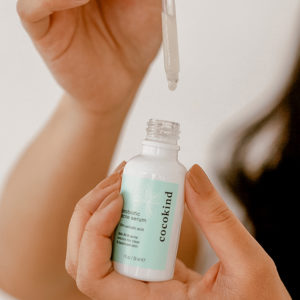
Source: cocokind.com
7. What was the most challenging product for you to swap to a low waste product? Or is there something that you’ve had trouble finding a good zero waste alternative for?
The hardest thing for me has been skincare. Don’t get me wrong, there are a ton of great brands out there, Cocokind and Osea to name a couple. But my skin is so so sensitive and I have not yet found an everyday moisturizer or sunscreen that adequately moisturizes my skin, doesn’t break me out, and doesn’t come in a plastic bottle. I do my best to use up all the product inside and recycle the bottle when its empty, but I would love to find a plastic-free alternative. It just goes to show though, that going completely zero waste or plastic-free isn’t always possible!
8. What are some of your future plans and how might sustainability tie into those goals/plans?
My and Michael’s goal is to purchase land here in California and build a home just big enough for the 2 of us thats powered by solar energy. We also want to build a homestead on our land to grow fruits and vegetables for ourselves and to share with our community. We envision a very quiet and slow life together, keeping our impact as low as possible. I believe our love for the environment has kept us grounded and from wanting a lot of material things.

